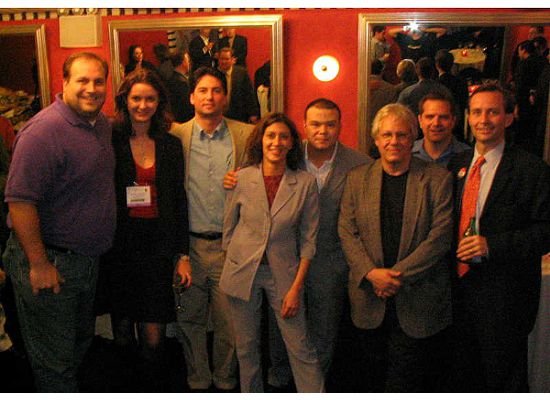Getting Behind Soybeans
/On my way to the airport Sunday morning, I was listening to a talk radio program about biodiesel and its advantages. And I can't seem to find a significant downside. The U.S. is the largest grower of soybeans, with more than half the value of the soy crop exported to foreign markets. Soybeans are the #2 cash crop in the country and the #1 crop in terms of value of exports. We grow this stuff in amazing abundance.
Soybeans are just one crop we can use to manufacture biodiesel, which can be burned in diesel engines without the need for any modifications. The engine may lose a mile or two per gallon, but biodiesel can actually increase the power a typical diesel engine can generate. Pollution and hydrocarbons are significantly reduced when this fuel is burned, as compared to diesel fuel distilled in the normal way. Just about the only downside I can think of is that biodiesel doesn't have the distribution infrastructure in place that we have for gasoline and normal diesel fuel. But if that could be corrected, this country could have a renewable, clean energy source that can be produced domestically.
Indeed, many municipalities and commercial fleets have introduced biodiesel, with the only disadvantage being its current price (perhaps 10-15 cents per gallon higher than regular diesel). But investing in the infrastructure would correct this cost issue. My bud Legislator Dan Losquadro has introduced it to Suffolk County's fleet of diesel vehicles, ensuring a reduction in pollution.
Soybeans can be used for a lot more. Not only are they a valuable export, but they can be used domestically for animal feed and even people food. Personally, I've been a fan of edamame for years. Typically served as an appetizer in Japanese restaurants, edamame is a steamed soybean often served with a light coating of salt. It's healthy, high in protein and delicious (I often eat it instead of popcorn when watching a movie at home). A 60-pound bushel of soybeans can be processed into about 48 pounds of protein-rich meal and 11 pounds of oil.
So where's the downside?
I've already made up my mind that my next vehicle will be a diesel truck. Imagine what things could look like 10 years down the road if we made an investement in infrastructure to produce and distribute biodiesel made from soybeans...
Supposed people stopped giving a shit that Hummers get only 10 miles to the gallon because its fuel is produced cheaply, domestically and it doesn't pollute like petroleum. Imagine that biodiesel helps us to wean ourselves off foreign oil. Imagine that we produce this fuel and export it to other nations because soybeans are grown in such abundance.
Imagine that soybeans make an impact on our poor diets here in the U.S. and people start eating it as a healthy, nutritious and yummy snack. (I even have an edamame recipe book my mom brought home from the bookstore and I plan to try out several of the recipes.)
But look at what we have now. Biodiesel is used only sparsely due to the infrastructure problem. For some unknown reason, you can't get edamame outside of specialty and health food stores (and Japanese restaurants). What is it going to take to get us to realize the benefits of this amazing crop?












































